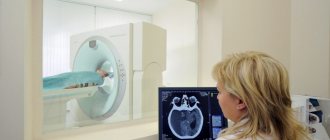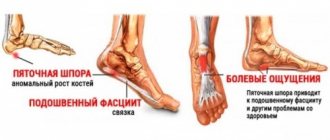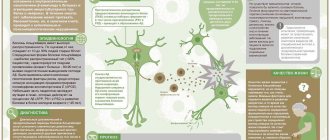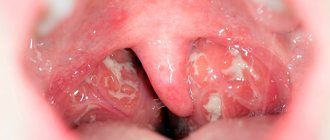- First aid
Epilepsy is a chronic neurological disease that manifests itself as recurrent seizures in the form of motor and/or sensory disturbances. The most common symptom of the disease is seizures. The disease is characterized by a wave-like course; after an attack, a stage of remission occurs. Treatment has several directions - providing first aid during an attack, reducing convulsive activity of the brain and preventing complications of the disease.
Epilepsy is one of the most common neurological diseases
Causes of epileptic seizures
Epilepsy, which manifests itself in adulthood, is a neurological disease. During diagnostic activities, the main task of specialists is to identify the main cause of the crisis. Today, epilepsy attacks are divided into two categories:
- Symptomatic – manifests itself under the influence of traumatic brain injuries and various diseases. Quite interesting is the fact that with this form of pathology, an epileptic seizure can begin after certain external phenomena (loud sound, bright light).
- Cryptogenic – single attacks of unknown nature.
The presence of epileptic seizures is a clear reason for the need for a thorough diagnostic examination of the body. Why epilepsy occurs in adults is such a complex question that specialists do not always manage to find the correct answer. According to doctors, this disease may be associated with organic brain damage. Benign tumors and cysts located in this area are the most common causes of a crisis. Often, the clinical picture characteristic of epilepsy manifests itself under the influence of infectious diseases such as meningitis, encephalitis and brain abscess.
It should also be mentioned that such phenomena can be the result of stroke, antiphospholipid disorders, atherosclerosis and a rapid increase in intracranial pressure. Often, epileptic seizures develop against the background of long-term use of drugs from the category of bronchodilators and immunosuppressants. It should be noted that the development of epilepsy in adults can be caused by a sudden cessation of the use of potent sleeping pills. In addition, such symptoms can be caused by acute intoxication of the body with toxic substances, low-quality alcohol or drugs.
Epilepsy in children, features
Parents should not be afraid to consult an epileptologist if they suspect seizure activity in their child. Often seizures are not related to epilepsy. Thus, often “epilepsy in children under one year of age” is nothing more than a manifestation of febrile seizures, which are a reaction to high temperature.
These seizures can occur from infancy until the age of 5 years. If a single attack of such convulsions develops against a background of high fever, it is not capable of causing harm to the brain.
However, parents should consult an epileptologist if they have frequent seizures. In doing so, they must provide the doctor with the following information:
- At what age did you have your first attack?
- what was the onset (gradual or sudden);
- how long did the attack last? how it proceeded (movements, position of the head, eyes, complexion, tense or relaxed muscles);
- conditions of occurrence (fever, illness, injury, overheating under the sun, in complete health);
- the baby’s behavior before and after the attack (sleep, irritability, tearfulness);
- what kind of help was provided to the baby.
It must be remembered that only an epileptologist can give an opinion after a comprehensive examination and stimulation electroencephalography.
Children may have some special variants of the disease, for example, benign childhood epilepsy with central temporal peaks (according to EEG), childhood absence epilepsy. These options can result in complete spontaneous remission, or recovery.
In other cases, the child may develop Lennox-Gastaut syndrome, which, on the contrary, is accompanied by mental retardation, a rather severe course and resistance to therapy.
Nature of manifestation
Treatment methods and strategies are selected based on the type of disease. Experts identify the following types of epilepsy in adults:
- non-convulsive seizures;
- night crises;
- seizures due to alcohol consumption;
- seizures;
- epilepsy due to previous trauma.
Unfortunately, the specific causes of convulsions are still unknown to doctors.
According to experts, there are only two main reasons for the development of the disease in question in adults: hereditary predisposition and organic brain damage. The severity of the epileptic crisis is influenced by various factors, among which mental disorders, degenerative diseases, metabolic disorders, cancer and toxin poisoning should be highlighted.
Diagnosis of epilepsy - EEG and MRI
In diagnosing epilepsy, one cannot do without EEG, that is, without electroencephalography. EEG is the only reliable method showing spontaneous “burst” activity of cortical neurons, and in doubtful cases, with an unclear clinical picture, EEG is a diagnostic confirmatory examination.
However, it must be remembered that in the interictal period the patient may have a normal encephalogram. If an EEG is done once, the diagnosis is confirmed only in 30-70% of all cases. If you increase the number of EEGs up to 4 times, the diagnostic accuracy increases to 92%. Long-term monitoring, including EEG recordings during sleep, further enhances the detection of seizure activity.
An important role is played by the provocation of convulsive discharges that occur during hyperoxia and hypocapnia (during a test with hyperventilation), during photostimulation, as well as during sleep deprivation.
- It is known that if the patient completely refuses to sleep the night before the examination, this can cause the manifestation of latent convulsive activity.
If there are partial seizures, then an MRI or CT scan of the brain is necessary to exclude focal lesions.
Factors provoking the appearance of an epileptic crisis
An epileptic seizure can be triggered by various factors, which are divided into internal and external . Among the internal factors, infectious diseases affecting certain parts of the brain, vascular abnormalities, cancer and genetic predisposition should be highlighted. In addition, an epileptic crisis can be caused by disorders of the kidneys and liver, high blood pressure, Alzheimer's disease and cysticercosis. Often, symptoms characteristic of epilepsy appear due to toxicosis during pregnancy.
Among external factors, experts highlight acute intoxication of the body caused by the action of toxic substances. Also, an epileptic seizure can be caused by certain medications, drugs and alcohol. Much less often, symptoms characteristic of the disease in question appear against the background of traumatic brain injuries.
Causes
As a rule, epilepsy develops based on a hereditary predisposition. The brain of such patients is predisposed to a special state of nerve cells (neurons) - they are characterized by an increased readiness to conduct impulses. Adults may become ill after suffering a head injury or severe infectious disease. In addition, there is a high risk of developing the disease in old age, when the brain is “worn out”: especially after strokes and other neurological diseases.
Why does epilepsy develop?
However, it cannot be said with certainty that epilepsy will definitely begin after any serious head injury. This is completely optional. Sometimes in adults it is very difficult to determine the causes of the disease - in this case, hereditary factors are cited.
Risk factors:
- Hereditary factors.
- Head injuries.
- Infectious diseases of the brain.
- Complications due to long-term alcohol consumption.
- Brain neoplasms (cysts, tumors).
- Strokes.
- Anomalies of cerebral vessels.
- Frequent stress, overwork.
- Senile age.
Primary and secondary causes of epilepsy
Note! Risk factors include strokes, brain infections, and alcohol intoxication.
What is the danger of seizures
The frequency of episodes of epileptic crisis is of particular importance in diagnosing the disease. Each such attack leads to the destruction of a large number of neural connections, which causes personality changes. Often epilepsy attacks in adulthood cause changes in character, development of insomnia and memory problems. Epileptic seizures that occur once a month are rare phenomena. The average frequency of episodes is about three over thirty days.
Status epilepticus is assigned to a patient in the presence of a constant crisis and the absence of a “bright” interval. In the case when the duration of the attack exceeds thirty minutes, there is a high risk of developing catastrophic consequences for the patient’s body . In such a situation, you must immediately call an ambulance, informing the dispatcher about the illness.
The most characteristic symptom of this disease is a seizure
General information about the disease
Epilepsy is a disease that is chronic in nature, but manifests itself quite rarely in the form of short-term seizures. At the time of an attack, numerous foci of excitation occur in the brain, which does not occur in healthy people. Epileptic seizures occur spontaneously and regardless of a person’s will.
An epileptic seizure is characterized by a temporary loss of sensory, autonomic, mental and motor functions. Contrary to popular belief that the disease epilepsy is a very rare phenomenon, such a diagnosis is given to every hundredth inhabitant of the Earth.
Interesting! Similar symptoms and micro-attacks occur at least once in a lifetime with every 12th person on earth.
It was previously thought that it was impossible to cure epilepsy. Modern treatment methods can significantly alleviate the condition of patients. In more than 60%, thanks to high-quality therapy, the symptoms of the disease disappeared completely, and about 20% felt relief.
When describing this pathology, it is worth mentioning the following facts:
- the disease affects both men and women equally;
- more cases among children;
- a larger percentage of sick people occur in developing countries than in developed ones;
- age does not affect the risk and frequency of epileptic seizures.
As a rule, the presence of the disease first becomes known in childhood or adolescence. The first signs of epilepsy are observed between the ages of 5-10 or in adolescents at 12-18 years of age.
Clinical picture
The first signs of epilepsy in adult men most often appear in a latent form. Often patients fall into momentary confusion, accompanied by uncontrolled movements. During certain phases of the crisis, patients' perception of smell and taste changes. Loss of connection with the real world leads to a series of repetitive body movements. It should be mentioned that sudden attacks can cause injury, which will negatively affect the patient’s well-being.
Among the obvious signs of epilepsy are enlarged pupils, loss of consciousness, tremors of the limbs and convulsions, erratic gestures and body movements. In addition, during an acute epileptic crisis, uncontrolled bowel movements occur. The development of an epileptic seizure is preceded by a feeling of drowsiness, apathy, severe fatigue and problems with concentration. These symptoms may be temporary or permanent. Against the background of an epileptic seizure, the patient may lose consciousness and lose mobility. In such a situation, there is an increase in muscle tone and uncontrolled cramps in the legs.
Symptoms of the disease
The course of epilepsy has a paroxysmal character; after the end of the attack, signs of the disease are usually absent, but cognitive impairment and other nonspecific symptoms may be observed. Clinical manifestations depend mainly on the type of seizure - partial or generalized seizure. The severity of epilepsy (mild, moderate, severe) and the location of the lesion also influences. Epilepsy is indicated by the occurrence of more than two seizures; one person may have both partial and generalized seizures.
Partial seizure
A partial seizure is usually preceded by the appearance of an aura (nausea, dizziness, general weakness, ringing in the ears, etc.), that is, the patient anticipates another exacerbation. There are two types of partial seizure - simple and complex. In a simple attack, the patient is conscious, while a complex attack is characterized by loss of consciousness. A partial attack is accompanied by motor, sensory and vegetative-visceral and mental manifestations.
| Partial seizure component | What's happening |
| Motor | Local convulsions appear. For example, only the left or right hand twitches, while other parts of the body remain motionless. Local convulsions can be localized in any part of the body, but most often affect the upper or lower extremities and face. |
| Sensitive | The sensitive component often manifests itself in the form of unusual sensations in the body (numbness, crawling sensation). Gustatory, olfactory, auditory, or visual hallucinations may also occur. |
| Vegetative-visceral | The vegetative-visceral component manifests itself in the form of redness or pallor of the skin, increased sweating, dizziness, a lump in the throat, and a feeling of squeezing behind the sternum. |
| Mental | Attacks with mental dysfunction manifest themselves in the form of derealization (a feeling of a change in the real world), unusual thoughts and fears, and aggression. |
A pathological focus in the brain can spread, in which case a partial attack becomes a generalized one.
Generalized attack
A generalized seizure often appears suddenly, without a preceding aura. The pathological discharge during a generalized seizure completely covers both hemispheres of the brain. The patient is unconscious, that is, does not realize what is happening; most often (but not always) the seizure is accompanied by convulsions. Generalized seizures are convulsive - tonic, clonic, tonic-clonic, and non-convulsive (absence seizures).
| Type of attack | Characteristics, what it looks like | Consciousness |
| Tonic | Tonic seizures occur rarely (approximately 1% of cases). Muscle tone increases, the muscles become as if they were made of stone. Tonic spasms affect all muscle groups, so the patient often falls. | Absent |
| Clonic | Clonic convulsions appear in the form of rapid and rhythmic twitching, affecting all muscle groups. | Absent |
| Tonic-clonic | A tonic-clonic seizure is the most common and consists of two phases - tonic and clonic. In the tonic phase, strong muscle tension is observed. The patient often falls, breathing stops, and tongue biting may occur. Then the clonic phase begins - twitching of all muscles occurs. Gradually the cramps stop, involuntary urination may occur, after which the patient usually falls asleep. | Absent |
| Absence seizures | Absence is a non-convulsive form of a generalized seizure, which in most cases develops in children and adolescents. When absence seizure develops, the child suddenly freezes. There may be trembling of the eyelids, tilting of the head, and with complex absence seizure the child may make automatic movements. The attacks last a few seconds and can go unnoticed for a long time. | Disturbed, but not completely disabled |
Features of diagnostic measures
The symptoms of epilepsy in adults are so pronounced that in most cases a correct diagnosis can be made without the use of complex diagnostic techniques . However, you should pay attention to the fact that you should undergo examination no earlier than two weeks after the first attack. During diagnostic procedures, it is very important to identify the absence of diseases that cause similar symptoms. Most often, this disease manifests itself in people who have reached old age.
Epileptic seizures in people aged thirty to forty-five years are observed in only fifteen percent of cases.
In order to identify the cause of the disease, you should consult a doctor who will not only take an anamnesis, but also conduct a thorough diagnosis of the whole body. To make an accurate diagnosis, the doctor must study the clinical picture, identify the frequency of seizures and conduct magnetic resonance imaging of the brain. Since, depending on the form of pathology, the clinical manifestations of the disease can differ significantly, it is very important to conduct a comprehensive examination of the body and identify the main cause of the development of epilepsy.
Signs and symptoms of epilepsy
Signs of epilepsy are strictly related to the form of the disease, seizures are unpredictable, often the patient may experience dizziness, nausea, anxiety, he may imagine sounds and smells, after which the seizure itself begins. Most often, after an epileptic seizure, the last thing a person remembers is the sensations during the aura.
Epilepsy worsens the quality of life, because the individual lives in constant fear and tension, due to the unpredictability of seizures. Symptoms also depend on the form of the disease itself; with partial seizures, the person seems to switch off and may become fixated on repeating certain sounds, while with a complex seizure, involuntary convulsions, cyanosis due to interruptions in the respiratory center, wheezing, foam at the mouth and complete unconsciousness are observed . Danger to life arises from status epilepticus, which is characterized by repeated attacks one after another, without the patient returning to reality; as a result of complications, swelling of the brain occurs, moreover, the heart can stop. Status epilepticus requires immediate hospitalization.
Diagnosis of epilepsy
The most reliable method for diagnosis is EEG (electroencephalography), which allows one to distinguish epilepsy from other diseases. EEG registration facilitates the selection of the correct treatment depending on the location of pathological discharges in the cortex. After EEG monitoring during sleep and the attack itself, MRI and CT examinations are prescribed to clarify the diagnosis and to make a differential diagnosis. Diagnosis is carried out by neurologists and epileptologists.
Treatment of epilepsy
Psychological treatment
Epilepsy is permanent. It, like any disease, varies in severity and many types of epilepsy can be treated psychologically. We have developed a new and progressive method of treatment using the power of our own energy (synergetic contact) and the power of words. In our sessions, we use psychotherapy as the main method of treating epilepsy. We remove the root cause of the disease without pills and all kinds of medications and the person gets rid of the disease. This method has shown amazing success and a great future. Contact us, we are ready to help you heal and recover from a serious illness using the most advanced method of the 21st century.
Drug treatment
Since epilepsy is a brain disease and today it has not been fully studied, official medicine treats the disease medically. To reduce the frequency of attacks, drug treatment is prescribed; the choice of drug is the specialization of highly specialized personnel, since there is no universal dose, and each treatment regimen requires subsequent titration in accordance with body weight and the observed effects. Mono- or polytherapy can last for several years. In no case should you neglect treatment, since each new attack “paves a neural path” to the next one. About 30% of cases are drug-resistant (repeated stereotypic seizures); in this situation, the possibility of surgical intervention is considered, which involves removing a section of the brain. This treatment is only relevant for focal epilepsy and if the risks of reducing the patient’s quality of life are excluded. In other cases, a daily strict diet of potent drugs.
Tags: epilepsy
Next article >>> Nightmares - reasons, what they mean and how to get rid of them
What to do during an attack
When considering how epilepsy manifests itself in adults, special attention should be paid to the rules of first aid. In most cases, an epileptic attack begins with a muscle spasm, which leads to uncontrolled body movements . Often in such a state the patient loses consciousness. The appearance of the above symptoms is a good reason to contact an ambulance. Before the doctors arrive, the patient should be in a horizontal position, with his head lowered below his body.
During an attack, the epileptic does not react even to the strongest stimuli; the reaction of the pupils to light is completely absent
Often, epileptic seizures are accompanied by bouts of vomiting. In this case, the patient should be in a sitting position. It is very important to support the epileptic's head in order to prevent vomit from entering the respiratory system. After the patient comes to his senses, he should be given a small amount of liquid.
Epilepsy treatment, drugs and surgery
- Is it necessary to treat epilepsy in adults in any case, or can it be done without anticonvulsants?
- When should you start treatment for epilepsy and when should you stop treatment?
- Which patients are at greatest risk for seizure recurrence after discontinuation of therapy?
All these questions are extremely important. Let's try to answer them briefly.
When to start treatment?
It is known that even if a patient has developed a single major tonic-clonic seizure, there is a chance that it will never happen again, and it is up to 70%. The patient should be examined after the first or only attack, but treatment may not be prescribed.
Absence seizures, as a rule, are repeated and, on the contrary, they need to be treated despite their “ease” of occurrence, compared to a major seizure.
When is there a high risk of seizure recurrence?
In the following patients, the doctor has the right to expect a recurrent attack, and you need to be prepared for it by prescribing treatment for epilepsy immediately:
- with focal neurological symptoms;
- with mental retardation in children, which, coupled with seizures, requires initiation of treatment for epilepsy;
- in the presence of epileptic changes on the EEG during interictal time;
When should you stop treatment?
As soon as the doctor believes that epileptic seizures will not occur after stopping treatment. Often this confidence is due to the fact that in some cases remissions occur spontaneously when the patient “goes beyond the age” of the seizure. This often occurs in the absence form of epilepsy, and in the benign childhood form.
Which patients are at high risk for seizure recurrence after discontinuation of therapy?
The doctor needs to carefully weigh the pros and cons before stopping the drug if:
- It took a long time for the patient to select the dose and type of medication, but he “didn’t go right away”;
- While the seizures were brought under control, they were frequent (every few days);
- the patient has persistent neurological disorders (paralysis, paresis);
- there is mental retardation. This “disinhibits” the cortex;
- in the event that there are constant convulsive changes in the encephalogram.
What drugs are used in modern treatment of epilepsy?
Currently, the basis of treatment for epilepsy is monotherapy, that is, the prescription of one drug, and the choice of drug is determined by the type of seizure, as well as the number and severity of side effects. Monotherapy improves patient adherence to treatment and minimizes omissions.
In total, about 20 different medications are currently used to treat epilepsy, which are available in many dosages and varieties. Anticonvulsants are also called anticonvulsants.
Thus, carbamazepine and lamotrigine are used for partial seizures, phenytoin is also used for tonic-clonic seizures, and valproate and ethosuximide are prescribed for absence seizures.
In addition to these drugs, there are second-line drugs and additional drugs. For example, second-line drugs for the treatment of major tonic-clonic seizures are topiramate and primidone, and additional drugs are levitracetam.
But we will not delve into the list of drugs: they are all prescription drugs and are selected by a doctor. Let's just say that anticonvulsants are also used in the treatment of neuropathic pain, for example, with postherpetic neuralgia and trigeminal neuralgia.
Drug treatment
In order to prevent a relapse of this condition, it is very important to approach the issue of therapy correctly. To achieve long-term remission, the patient must take medications for a long time. The use of medications only in moments of crisis is unacceptable due to the high risk of complications.
You can use potent medications that stop the development of attacks only after consultation with your doctor. It is very important to notify your doctor of any changes in your health. Most patients manage to successfully avoid a relapse of the epileptic crisis, thanks to properly selected medications. In this case, the average duration of remission can reach five years. However, at the first stage of treatment, it is very important to choose the right treatment strategy and stick to it.
Treatment of epilepsy requires close attention to the patient’s condition on the part of the doctor. At the initial stage of treatment, medications are used only in small doses. Only in cases where the use of medications does not contribute to positive dynamics is it permissible to increase the dosage. The complex treatment of partial seizures of epilepsy includes drugs from the group of fonitoins, valproates and carboxamides. For generalized epileptic seizures and idiopathic seizures, the patient is prescribed valproate due to their mild effect on the body.
The average duration of therapy is about five years of regular medication use. Treatment can be stopped only if during the above period there are no manifestations characteristic of the disease. Since potent drugs are used during the treatment of the disease in question, treatment should be completed gradually. Over the last six months of taking medications, the dosage is gradually reduced.
Epilepsy comes from the Greek epilepsia - “caught, taken by surprise”
Forms of epilepsy and clinical characteristics
There are many forms of epilepsy, their classification is based on the symptoms of the attack and the pattern of electrical activity of the cerebral cortex recorded on the EEG. First of all, there are:
- Partial seizures;
- Generalized seizures (with primary and secondary generalization).
Partial seizures are manifested by the involvement of a local part of the neurons of the brain in a synchronous discharge, so consciousness is usually preserved. There may be frontal, temporal, parietal and occipital attacks.
During a generalized seizure, neurons in the cortex of both hemispheres suddenly “flare up.” This is accompanied by a typical loss of consciousness and biphasic tonic-clonic seizures. It is this type of manifestation that is called “epileptic”.
It happens like this - an epileptic seizure begins as a partial one, then suddenly “expands”, involving all neurons, and then proceeds as a generalized one.
In this case, we talk about a secondary generalized form of the disease. Primary generalized seizures are the same “real” epilepsy that develops at a young age without any particular reason and is often hereditary.
Symptoms of partial seizures of epilepsy
To understand the manifestations of typical partial seizures of epilepsy, you can open an anatomy textbook and see how higher functions are localized in the cerebral cortex. Then the course of partial, focal attacks will become clear:
- When the frontal lobes are damaged, complex motor automatisms may occur, for example, imitation of riding a bicycle, rotation of the pelvis, the patient may make sounds, and sometimes a forced turn of the head occurs;
- When the temporal cortex is damaged, a rich olfactory aura appears, taste sensations appear, sometimes the most unimaginable, for example, a combination of the aroma of cutlets with the smell of burnt rubber, “déjà vu” occurs, or the feeling of something that has already been experienced exactly, a sound aura appears, visual perception is distorted, automatisms appear or semi-voluntary stereotyped movements;
- Parietal focal seizures are less common and present with dysphasia, speech arrest, nausea, abdominal discomfort and rich complex sensory phenomena;
- Occipital partial seizures occur with simple visual phenomena, such as lightning, zigzags, colored balls, or symptoms of loss occur, such as limitation of visual fields.
Possible complications
The main danger of epileptic seizures is severe depression of the central nervous system. Among the possible complications of this disease, mention should be made of the possibility of relapse of the disease. In addition, there is a danger of developing aspiration pneumonia due to the penetration of vomit into the respiratory organs.
An attack of convulsions during water procedures can be fatal. It should also be emphasized that epileptic seizures during gestation can negatively affect the health of the unborn baby.
Types of partial seizures
A partial attack (the type is determined during diagnosis) is less severe. Intensities. There is no danger to life. It is associated with the occurrence of a focus of pathology in one of the hemispheres of the brain. The type of attack depends on the manifestations of the disease (the patient’s driving sensations, the impact on any system of the body).
| Type of attack | Main manifestations | The patient’s sensations during an attack and possible complications |
| Motor | Spontaneous movements of the muscles of the limbs and other parts of the body (the basic principle is that small areas of the body are involved). For example, rhythmic movements of the hand, foot, eyes, etc. | Movements cannot be controlled by the patient. Possible loss of consciousness |
| Sensory | The occurrence of various unusual sensations in the body (without any external reason) | The patient may experience a whole range of sensations: burning, an unusual buzzing in the ears, tingling in various parts of the body. Possible unusual tactile sensations and heightened sense of smell (appearance of phantom odors) |
| Vegetative-visceral | This type of attack is associated with unusual feelings in the stomach. Increased blood pressure and palpitations | The patient feels a feeling of emptiness in the stomach. There is thirst, the face often turns red. Loss of consciousness usually does not occur |
| Mental | This type is associated with mental disorders. Main manifestations: memory lapses, sudden disturbances in thinking. Change of mood. The patient cannot recognize familiar places and people known to him | Loss of consciousness usually does not occur. The patient experiences phantom, causeless feelings: panic begins or he is overwhelmed by a wave of happiness. The "déjà vu" effect. A feeling of the unreality of everything that exists. Hallucinations |
Partial seizures
A complex attack is characterized by memory loss and a kind of “freeze frame” in the patient’s behavior: a person suffering from the disease can maintain motor activity, while he completely “falls out” of reality: does not respond to calls, freezes in one position (possibly with the repetition of some or movements or any phrases).
Note! There is a type of attack that can last for a very long time, for several hours. The person does not necessarily go into convulsions, but his movements are automatic, there is no consciousness, but the body continues to move, and there is no fall.
Such attacks can result in an extensive pathological process, when the entire brain is involved in the process and a complete loss of consciousness and coordination occurs (the patient falls, convulsions are observed). This phenomenon is called secondary generalization. In this case, the phenomena that precede a general seizure and are associated with any system of the body are called an aura. This is the beginning of a severe attack, which the patient remembers: visual or tactile sensations, sensations in the stomach or other type remain in the memory.
Memo for patients with epilepsy
The phenomenon of an aura can help patients prepare for an attack: during its course, they can prepare and ensure their safety: lie down on something soft in advance, call for help.
Treatment of epilepsy
Forecast
With a single appearance of epilepsy in adulthood and timely seeking medical help, we can talk about a favorable prognosis. In approximately seventy percent of cases, patients who regularly use special medications experience long-term remission. In cases where crisis phenomena recur, patients are prescribed anticonvulsant medications.
Epilepsy is a serious disease affecting the nervous system of the human body. In order to avoid catastrophic consequences for the body, you should focus maximum attention on your own health . Otherwise, one of the epileptic seizures can be fatal.
https://www.youtube.com/watch?v=Sq0ogmpmtRk
Mechanism of attack
The mechanism of occurrence is associated with the most complex processes of the brain. Existing risk factors gradually lead to the formation in the brain of a group of nerve cells characterized by a lower level of excitation threshold. In practice, this means that this group easily becomes excited, and the “trigger” may be the most insignificant process. In this case, doctors talk about the formation of an epileptic focus. If a nerve impulse arises in it, then it is always ready to expand to neighboring groups of cells - thus the process of excitation expands and covers new parts of the brain. This is how an attack manifests itself at the biochemical level. At this time, we observe various unexpected manifestations of the patient’s activity, so-called “phenomena”: these can be both mental phenomena (short-term mental disorders) and pathologies of feelings and muscles.
Seizures in epilepsy
If you do not take appropriate medications aimed at reducing the activity of pathological processes, the number of lesions may increase. Constant connections between foci can be created in the brain, which in practice results in complex, protracted seizures, covering many different phenomena, and new types of seizures may appear. Over time, the disease affects healthy parts of the brain.
The type of phenomenon is associated with the type of neurons affected by the pathology. If the attack affects the cells responsible for motor activity, then during the attack we will see repeated movements or, on the contrary, freezing of movements. For example, when neurons responsible for vision are included in the pathological process, the patient will see sparks before the eyes or complex visual hallucinations. If the neurons responsible for the sense of smell are activated, a person with epilepsy will smell unusual but distinct odors. The manifestations of the disease are similar when the neurons responsible for the motor activity of a particular organ are turned on.
Grand mal seizure in epilepsy
There are some types of disease that are characterized by the absence of a focus of excitation due to the pathology of a large number of cells throughout the cerebral cortex. With this type of illness, we see that the emerging impulse instantly covers the entire brain: this process is characteristic of the so-called generalized attack, which is known to most due to the brightness of its course.
The frequency of seizures is of great importance for treatment. The problem is that each attack means some damage to neurons, their death. This leads to disturbances in brain activity. The more frequent the attacks, the more dangerous the patient’s situation. Without appropriate treatment, character distortion, peculiar typical behavior may arise, and thinking may be impaired. A person may change towards painful vindictiveness, rancor, and there is a deterioration in the quality of life.
Petite seizure in epilepsy
Epilepsy: treatment with traditional methods
There are many folk recipes that are effective for patients diagnosed with epilepsy. Treatment with folk remedies should be long-term, only in this case can serious changes be noticed. There are many complex recipes for decoctions, where several types of herbs are present, and there are also simple ones, but no less effective. So, it is recommended to use such formulations daily, and attacks will become rare and mild:
- Before each meal you need to drink 1 tablespoon of freshly squeezed onion juice.
- Three times a day you need to drink valerian tincture, the number of drops for children corresponds to their age, and for adults 30-40 drops.
- Every morning on an empty stomach you need to eat an apricot kernel, their quantity should correspond to the patient’s age. The course of admission is three months, after a month break, and repeat the course.
But in addition to treatment with folk methods, many also resort to the help of the church. If you talk to the priest, he will tell you that there is a prayer for epilepsy; for epilepsy, it is read twice a day. Believers believe that only God can help them cure such an illness.
Preventive measures
It is impossible to prepare in advance for the onset of epilepsy, and therefore to prevent it, since the disease is difficult to diagnose at the stage of its hidden course.
Nevertheless, following simple recommendations will reduce the risk of possible development of the disease, in particular:
- adherence to sleep and rest patterns;
- timely treatment of infectious diseases;
- timely examination;
- pregnancy planning;
- regular walks;
- cessation of drinking alcohol and smoking.
The prognosis of the disease is quite favorable; about 80% of the total number of patients forget about seizures if they receive the necessary and easy treatment. In the absence of therapy, it is possible that consequences may develop that can ultimately lead to the death of the patient for various reasons.
So, symptomatic epilepsy is a serious disease that requires careful attention and timely treatment. Don't let the disease get worse and take care of yourself.
Signs of nocturnal epilepsy
According to statistics, nocturnal epilepsy attacks occur in 30% of cases. Pathological signs may appear when falling asleep, during sleep, or during awakening. Among the main causes of nocturnal epilepsy are the following factors:
- hereditary predisposition;
- history of traumatic brain injury;
- excessive consumption of alcoholic beverages;
- sleep disturbance;
- prolonged psycho-emotional stress.
The duration of an attack at night can vary from a few seconds to 5 minutes. Most often, patients do not remember the seizures that occurred. Some can describe the sensations they experience. Epilepsy during sleep is accompanied by certain characteristics:
- abrupt awakening for no reason;
- feeling of nausea, possible vomiting;
- severe headache;
- tremor;
- pronunciation of unusual sounds;
- speech disorder.
Nocturnal epilepsy can lead to rash actions. Patients may get on all fours in their sleep or pretend to ride a bicycle. You can suspect the presence of seizures based on the following indirect symptoms:
- tongue bites:
- traces of blood on the pillow after waking up;
- bruises and abrasions on the body;
- muscle pain;
- wet bed due to uncontrolled urination;
- waking up in an unusual place (on the floor, on the carpet, etc.).
The listed symptoms are individual in nature. In each patient they can manifest themselves with varying severity. Therefore, nocturnal epilepsy attacks are considered a difficult disease to diagnose.
Treatment
How is drug treatment carried out? After the examination, the epileptologist selects the drug that will minimize the pathological excitability of nerve cells. Sometimes combination therapy is used. The patient is prescribed 2 or more anticonvulsant drugs. There are cases when taking hormones is required: predinisone or ACTH.
In 90% of cases, constant use of epileptic pills leads to a reduction in the number of seizures. An epileptic is a socially functional person, but seizures interfere with his development.
Over time, with proper treatment, the seizures may stop completely. An adult must still take the prescribed pills for at least 5 years after the seizures have stopped. Children only need 2 years.
Patients with status epilepticus are brought back to normal by administering anticonvulsants intravenously. Frequent seizures caused by the tumor worry relatives, and doctors sometimes suggest surgery to remove part of the brain.
These operations are extremely dangerous because the doctor may accidentally hit important neurons. But according to statistics, operations to remove a lesion in the temporal lobe are most successful.
Temporal and parietal localization
One type of symptomatic epilepsy is temporal lobe epilepsy. This subtype is dangerous for the patient because if left untreated, the patient develops mental disorders and secondary seizures of a generalized form.
Temporal lobe epilepsy is considered one of the most common, as it accounts for up to 60% of the symptomatic type and about 25% of all types of epilepsy.
The causes of this disease are similar to those mentioned above, but in most cases these are birth injuries and infectious diseases suffered during pregnancy.
Symptoms of temporal lobe epilepsy are increasing. Thus, at a very early age, the presence of febrile convulsions is noted, after which a peculiar period of calm, or remission, begins.
Further, simple epileptic seizures, complex seizures and secondary generalized seizures begin to appear. The listed attacks increase as the disease progresses.
In addition to temporal lobe epilepsy, there is such a thing as frontal (frontotemporal) epilepsy. In this situation, everything depends on the location; when the lesion is located in the frontal lobe of the brain, this disease develops.
Frontal epilepsy is characterized by the fact that in most cases it worsens at night, and there is no aura before the main attack.
Parietal (occipital) epilepsy has the mildest form of all variants. As a rule, when the parietal or occipital lobe is affected, the patient experiences partial seizures, he may feel an unpleasant tingling in the limbs, feel various nervous tics, and in severe cases, the patient may freeze with loss of consciousness.
Symptoms of tonic-clonic epilepsy
This type of epilepsy, generalized tonic-clonic, has 4 separate phases. They are also the main symptoms. This form always looks very scary. The patient is not conscious, the pupils are dilated, his body is arched or painfully convulsing. Such a person definitely needs the help of outsiders. The phases of the attack are:
- Precursor phase, or aura. A couple of hours before a severe seizure, the patient often has a headache or feels unwell.
- Tonic phase - convulsive tension of all muscle groups lasts for approximately 15–40 seconds. The chest muscles are also overextended and the person cannot breathe. The face turns blue at this time.
- Clonic convulsions. This phase lasts about 3-4 minutes. The patient begins to breathe hoarsely. Due to strong salivation, something like foam with blood comes out of the mouth.
- Relaxation. There is a sharp inhibition in brain cells. After convulsions, a person loses consciousness and then slowly comes to his senses. At times he immediately falls asleep or goes into a light coma.
If epileptic seizures begin for the 2nd and 3rd time, you should urgently call a doctor. He must urgently remove the person from the status, otherwise brain damage from hypoxia begins.
Alternative Interventions
Modern methods of therapeutic intervention are presented in a wide variety and new methods of therapy are often emerging.
Typically, alternative treatment methods include several areas:
- surgery;
- Voight method;
- ketogenic diet.
The frequency of attacks may be influenced by daily routine, and factors may also be individual. Nocturnal epilepsy may also sometimes appear, which involves the formation of seizures at night. Its course and treatment should also be studied strictly by the treating specialist.
Is it possible to cure completely and forever?
Is epilepsy curable or not?
Until recently, this diagnosis sounded like a death sentence.
The patient expected progression of the disease and disability. The achievements of modern medicine make it possible to get rid of the disease completely.
Some forms of the disease that occur in childhood are considered completely curable: rolandic, benign epilepsy of newborns.
If the disease manifests itself in adulthood and the patient experiences generalized attacks, then these forms are the most difficult to treat.
In this case, doctors use antiepileptic drugs to reduce the frequency of attacks. The prognosis of the disease is also unfavorable if the epileptic has cognitive disorders.
The curability of symptomatic types of the disease depends on the degree of brain damage, the duration of the process, and the cause. In most cases, after eliminating the provoking factors, seizures disappear and no longer bother the person.
How long does it take to treat epilepsy? How to get rid of epilepsy forever? The success of treatment is influenced by the following conditions:
- Age of onset of illness.
- The nature of the attacks.
- The form of the disease.
- Degree of brain damage.
- Duration of the flow.
- Presence of concomitant pathologies.
- Presence of provoking factors.
- The correct choice of therapy methods.
Symptoms
Epilepsy attacks are often accompanied by uncontrolled activity of the nervous system, loss of consciousness, and clouding of reason. Convulsions occur; in this case, it is better for the person to take a horizontal position. Features of the manifestation of symptoms are determined by the localization of the focus of abnormal neuronal activity.
The mild form is characterized by discomfort and excitement. When a seizure begins, the patient feels unwell, the receptors perceive information that is not actually there. A person is not able to completely control his body .
The severe form has more pronounced symptoms: voluntary uncontrolled activity, lack of understanding of what is happening, difficulty controlling the functioning of the limbs, convulsions, vomiting.
- Symptomatic frontal epilepsy is characterized as follows: seizure duration is about 40 seconds, spontaneous onset, problems with fine motor skills, seizures occur frequently.
- The temporal form is characterized by the following symptoms: a person does not understand what is happening to him, hallucinations from visual and auditory receptors, facial automatisms.
- Parietal forms: spasms in all muscles, problems with thermoregulation, unpleasant feelings, increased libido.
- Occipital form: head twitches, eyes move, blinking, visual hallucinations.
Diagnostics
For a clear understanding of epileptic seizures - what they are and the reasons for their formation, experts recommend that adults undergo a number of diagnostic procedures. Of course, the doctor makes a preliminary diagnosis already at the first consultation - after a thorough history taking.
The person says that he had an epileptic seizure with characteristic symptoms - convulsions, confusion, loss of urine. However, a single episode in an adult does not allow us to judge the true changes in the brain. A number of examinations are required:
- electroencephalography – identifying and recording the location of the focus of excitation in the brain;
- computer or magnetic resonance imaging - clarification of the main reason why the deterioration occurred, why epilepsy occurred, for example, a tissue scar after an injury, a formed brain cyst.
In order to obtain information about the health status of an adult, a specialist will prescribe additional laboratory and instrumental examinations:
- blood tests - general, biochemical, for past infectious diseases;
- cerebrospinal fluid examination to determine the possible cause of high cranial pressure;
- ECG – assessment of the functional capabilities of the heart;
- Ultrasound of internal organs - the presence of additional neoplasms;
- X-ray of the skull - hidden bone cracks, introduction of foreign bodies from the outside.
An epileptic seizure does not appear on its own. This is necessarily preceded by reasons - the formation of an epifocus in the structures of the brain. The disease can be suspected by a change in the behavior of an adult - incomprehensible lethargy, convulsive twitching of the muscles of the face and limbs. Early diagnosis of epilepsy is the key to successfully combating it.
Conspiracies for epilepsy
Spells against falling sickness are also often used in the treatment of people, because relatives try to resort to any of the methods just to help alleviate suffering:
- You need to take a crumb of bread, make a ball out of it and roll it over the chest, arms and legs of a patient with epilepsy, then take this ball to the crossroads and say: “Holy goodwill, accept bread and salt, and forgive the servant of God (name).
- Also using a crumb of bread and rolling it all over the patient’s body, say the following words: “I roll out, pronounce and cross, enviable and joyful, from a wild head, from a ruddy face, from bones, from brains, from a liver, from lungs, from a zealous hearts, from white hands, from swift feet, in pure words.”
Despite the fact that there is no most effective medicine that could cope with epilepsy, there are a lot of drugs that can be used to alleviate the patient’s condition, improve his quality of life, and reduce the frequency of seizures. Do not self-medicate or self-diagnose. Only a specialist has the right to do this.
How to stop epileptic seizures in adults and children
How can epilepsy be cured? Modern doctors use a complex of means to get rid of pathology. The main methods of treating epilepsy:
Medicines
Treatment of the disease begins with the prescription of medications. The following groups of funds are mainly used:
Anticonvulsants
Anticonvulsants are recognized as the gold standard all over the world: Phenobarbital, Carbamazepine and sodium valproate. This is the so-called starting therapy, the drugs are first-line drugs.
Carbamazepine is effective against partial seizures, the temporal lobe type of the disease, and primary generalized seizures. It is not prescribed for myoclonic seizures and absence seizures.
Sodium valproate has a wider spectrum of action and can be used for absence seizures. However, for primary generalized attacks, Phenobarbital is more effective.
Among the second-line drugs, the most often prescribed are: Lamotrigine, Topiramate, which have a complex effect and affect all types of attacks.
The first warning signs of seizures
A harbinger of epileptic seizures is an aura. It manifests itself with various symptoms. For each patient, the aura is individual and constant. Thanks to the warning signs, patients can warn others about the onset of an attack or independently move to a safe place. Aura symptoms include:
- sudden contraction of the muscles of the upper or lower extremities;
- repetition of the same movements;
- crawling, burning or tingling sensation in various parts of the body;
- hallucinations;
- a sharp change in mood in a negative direction.
The duration of the aura is several seconds. In this case, patients do not lose consciousness.
How to diagnose the disease
Diagnosis begins with a conversation between the doctor and the patient. The patient tells when the attacks first started, what can cause them, how long they last, what sensations he experiences afterwards, whether there is a headache and an acute reaction to light.
I am interested in information about relatives , whether any of them have epilepsy, since this could be inherited. It will also be a significant plus if there is a video or description of eyewitnesses to one of the seizures.
After the interview, the patient is asked to take a blood test . It may show abnormal electrolytes, which would indicate epilepsy. Or other changes that will allow you to suspect possible diseases that caused the seizures.
Electroencephalography is the main method of instrumental research. The received signals may be different from normal. In this way, it is possible to accurately determine in which area of the brain the disturbances occurred.
To visualize the nerve cells themselves, in the structure of which changes have occurred, magnetic resonance or computed tomography . An additional technique can be a genetic study to determine abnormalities in chromosomes.
First aid
From the outside, a seizure may look scary, but there is nothing dangerous about it, since it ends quickly and spontaneously.
At this moment, the patient only needs the attention of others so that he does not harm himself by losing consciousness.
A person’s life will depend on correct and simple actions.
The first aid algorithm[/anchor] is quite simple:
- Do not panic if you witness epilepsy.
- Grab the person so that he does not fall, help him smoothly lower to the ground, and lay him on his back.
- Remove objects that could hit him. Not looking for medicine in his things is useless. When he comes to his senses, he will take his pills himself.
- Record the time of the onset of the attack.
- Place something under your head (at least a bag or clothing) to soften head impacts. As a last resort, hold your head with your hands.
- Free your neck from the collar so that nothing interferes with your breathing.
- Turn your head to the side to prevent tongue retraction and asphyxia with saliva.
- Do not try to hold the limbs that are contracting in convulsions.
- If your mouth is slightly open, you can put a folded cloth or at least a handkerchief there to prevent biting your cheek or tongue. If the mouth is closed, do not try to open it - you may lose fingers or break the patient's teeth.
- Check the time: if the convulsions last more than two minutes, you need to immediately call an ambulance - intravenous administration of anticonvulsant and antiepileptic drugs is required.
- After the attack is over, help the person come to his senses, explain what happened and calm him down.
- Help him take his medications.
For patients with epilepsy, there are special bracelets that contain all the necessary information. When calling an ambulance, this bracelet will help doctors.
After the incident, the patient falls into deep sleep; there is no need to prevent this. It is better to accompany you home and put you to bed . At first, he should not consume foods that stimulate the central nervous system.
It is imperative to call an ambulance if the patient injures himself while unconscious, if the attack lasts more than two minutes, and if it recurs on the same day.
Existing treatments
The main goal of therapeutic interventions is to reduce the frequency of attacks. It is important to learn to control them and achieve a weakening of symptoms for a long period.
The choice of treatment methods is determined by the type of disease, the characteristics of its course, and also depends on the frequency of attacks. Drug therapy is usually used. In cases where brain dysfunction is accompanied by serious pathological processes, surgical intervention may be required.
Drug treatment
The symptomatic form is treated with anticonvulsants.
An epileptologist prescribes one drug in a certain dosage. This monotherapeutic approach achieves a stable positive effect. If there is no improvement, the dose is increased. Stop taking medications if there are no symptoms for 5 years. In this case, the amount of the drug is gradually reduced until it is completely stopped. The patient may be drafted into the army.
Carbamazepine is usually prescribed as the main drug. If no positive dynamics are observed, Depakin, Finlepsin, and Topamax are prescribed.
According to medical statistics, in 80% of cases of the disease, when drug treatment is used, the number of seizures is significantly reduced, until complete remission occurs, when seizures can be predicted and controlled.
Surgery
If there are structural changes in the cerebral cortex (abscess, aneurysm, tumor), a surgical solution to the problem is necessary.
Modern approaches to the treatment of epileptic seizures include the following methods:
- placement of microelectrodes into lesions;
- bypass;
- electrical stimulation of the vagus nerve.
After the operations, the prognosis is positive. The attacks cease to bother us and the patient can lead a healthy lifestyle.
When prescribing a course of treatment, the individual characteristics of the patient’s body and his state of health are taken into account. The operation is possible after a thorough examination.
Consequences and complications
Timely detection of epilepsy and comprehensive treatment of the crisis is the platform on which a person’s entire future life should be built. Otherwise, it will not be possible to avoid complications and severe consequences of the disease.
Of course, complex absence limits the social and work adaptation of people. People around, not understanding the causes of the disease, avoid a person with epilepsy and limit communication with him. Whereas, the pathology is not contagious at all. Experts confirm that the disease is not inherited - only a predisposition to it. Therefore, families can be created, and women can bear children. You just need to warn the gynecologist about your disorder.
It is quite possible to live with epilepsy. The main thing is to follow all the doctor’s recommendations and take medications in a timely manner.
Features of life with epilepsy
If you follow all the measures prescribed by a neurologist and psychologist, the life of a patient will not differ much from the life of a healthy person. It is important not to sharpen your attention to the disease and not expect constant attacks.
Restrictions in the presence of epilepsy:
- taking medications and diet with constant supervision of specialists;
- each attack is marked on the calendar;
- avoid sharp sounds and flickering, bright light;
- you cannot close yourself when taking a bath and you must have special fastenings so that in case of an attack you do not go under water;
- When eating, use unbreakable dishes, preferably plastic;
- good sleep;
- driving and drinking alcohol are excluded;
- swimming is possible only under supervision;
- Night and daily work schedules are prohibited.
Epilepsy can be controlled only with proper and constant use of medications. A neurologist can prescribe a course of treatment, even if the causes have not been identified. In adults under the age of 45, the disease is easier to treat. Early treatment gives a better chance of complete disappearance of attacks.
Author of the article: Kotlyachkova Svetlana
Article design: Oleg Lozinsky
How to treat epilepsy
It is not always possible to completely get rid of the disease. The goal of treatment is to make the attacks completely controllable, without significant harm to the patient’s health. Achieved through drug therapy.
Drugs from the following groups are used:
- calcium channel blockers;
- sodium channel blockers;
- synaptic vesicle protein 2A modulators;
- affecting GABA;
- with multiple mechanisms of action.
Principles that experts adhere to:
- Preference for treatment with one medication. Monotherapy allows you to understand whether the drug is suitable, rather than being left guessing which one worked or which caused the allergy.
- Dose titration is a gradual increase in dose to achieve a positive treatment result.
- Teach the patient to cope with attacks. For example, squeezing a rubber ball in your hands, which you need to carry with you if this happened on public transport. This helps you concentrate and reduce anxiety and reactivity.
- Cancellation of medication is possible only after examination by a doctor, and after 5 years since the last attack. Until this point, the patient is strictly instructed not to skip pills.
There are situations where it is very difficult or even impossible to control epileptic seizures with medications.
Then you can use a new method of cryosurgery . A portion of liquid nitrogen is injected into the area of the brain where foci of the disease occur, and the neurons that are out of order are frozen.
The vagus nerve stimulator is another surgically effective method. A device similar to a pacemaker is implanted in the chest area and a wire is attached to it. The latter wraps around the vagus nerve. Using this mechanism, it is possible to reduce the frequency and severity of an epileptic seizure.











